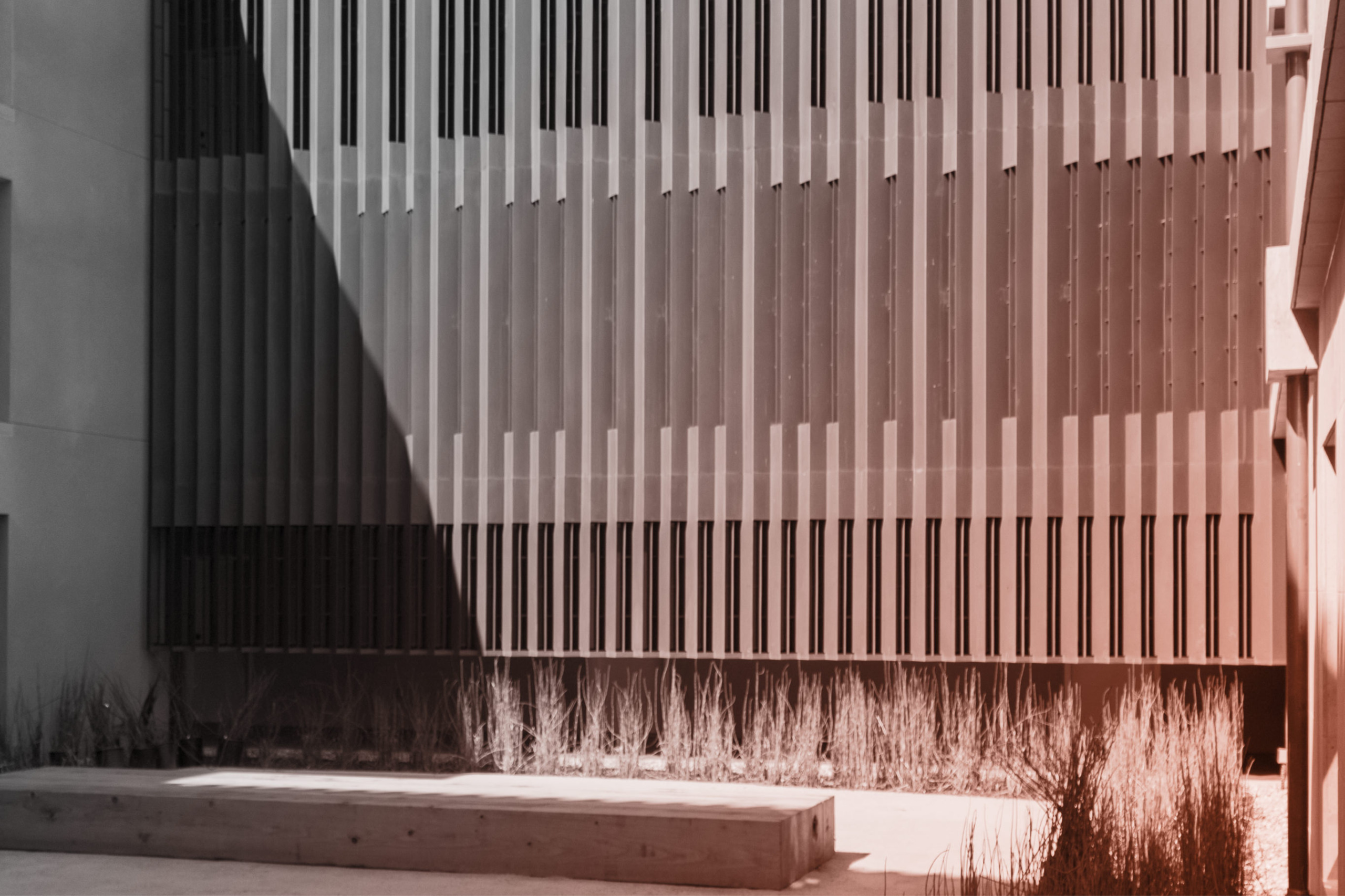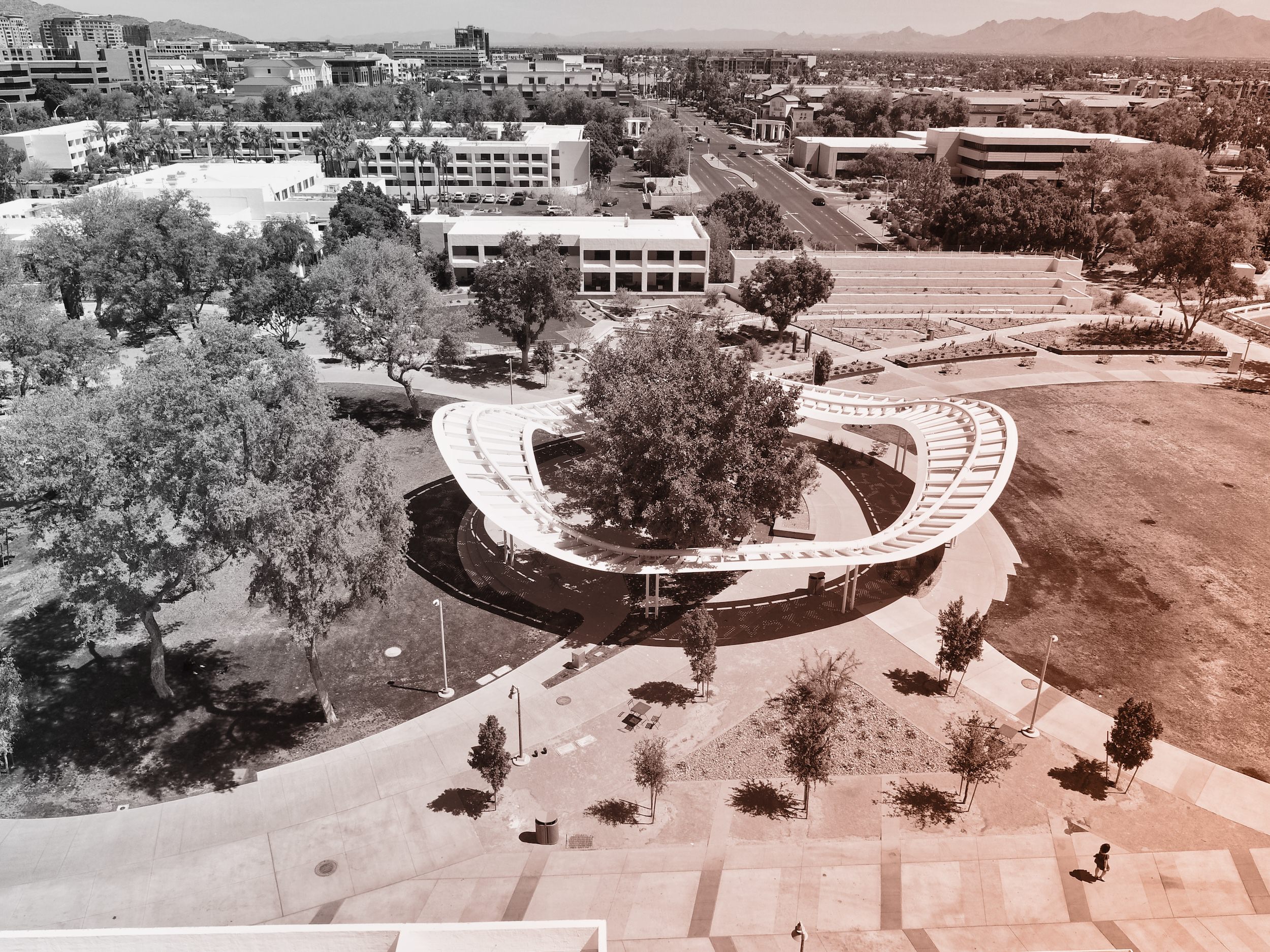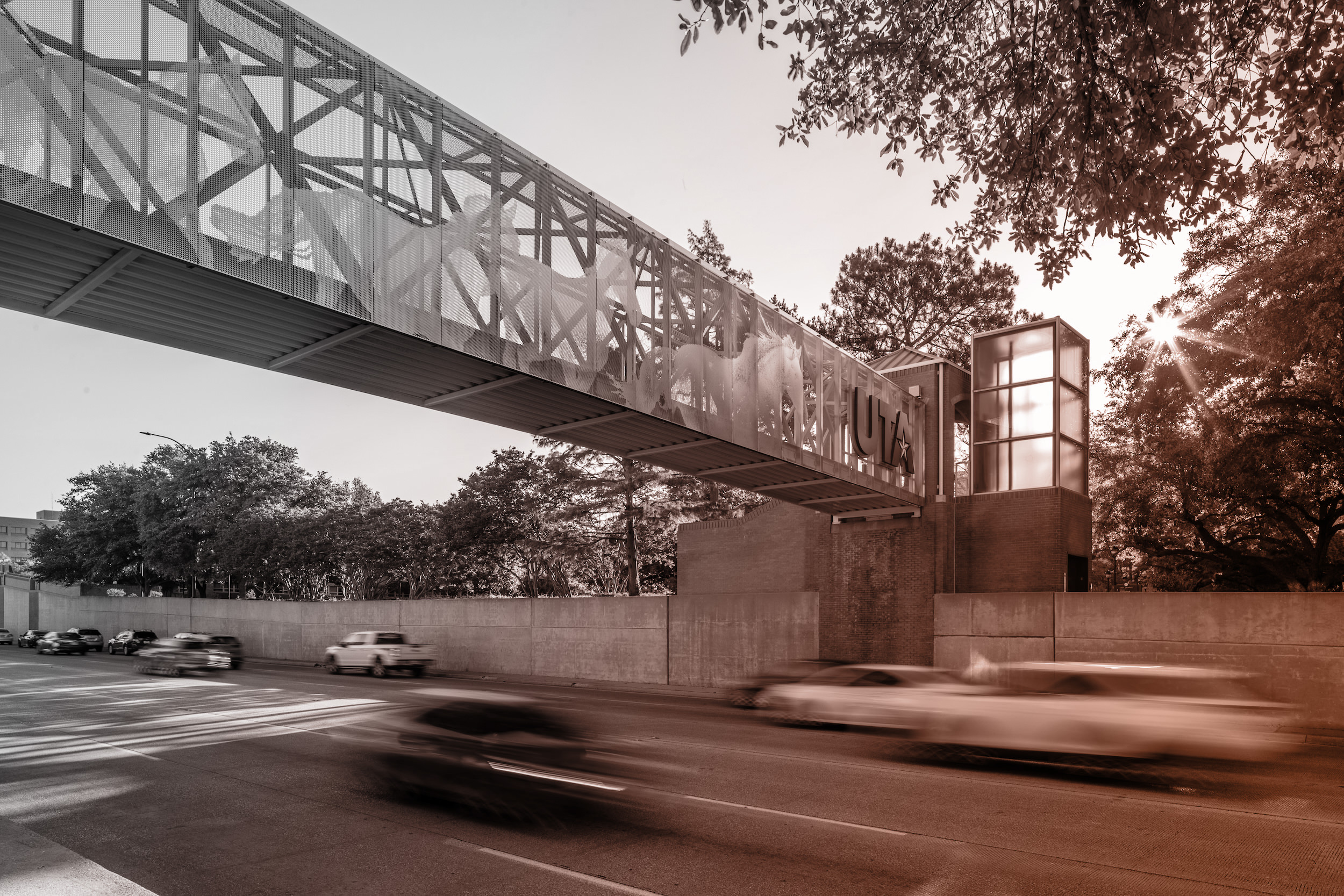Properties of Anodized Aluminum and Its Use in Architecture
Material Properties
Anodized aluminum is a method of passivating an aluminum alloy to prevent the material from oxidizing. While raw aluminum is a highly versatile and durable surface, if left to weather naturally it will turn to a light gray tone; sometimes, depending on the atmospheric pollution, dark gray mottling will be intermixed on the surface.
Raw aluminum, unlike stainless steel, will not sustain a polished surface when exposed to the atmosphere. Oxides form on the surface, dulling the finish. Frequent cleaning and polishing are required to sustain a luster. In seaside regions, unprotected aluminum will pit extensively.
By anodizing an aluminum surface, this atmospheric corrosion can be reduced, but not eliminated. Anodizing provides a thin aluminum oxide layer, which will deteriorate over time. Depending on the thickness and quality of the anodization, the surface should last 10-20 years.
Anodizing the surface of aluminum provides a layer of protection from scratches, but again, this material is not impervious to scratches due to its softness when compared with metals that rank harder on the Rockwell Hardness Scale.
Anodized finishes enhance the natural oxide film and can impart colors to the aluminum surface through chemical reactions with the alloying components or by the addition of colored dies or metal salts into the pores.



















 PHOTO © A. ZAHNER COMPANY.
PHOTO © A. ZAHNER COMPANY.

 Photo ©
Photo © 


 PHOTO ©️ Parrish Ruiz de Velasco (parrch.com)
PHOTO ©️ Parrish Ruiz de Velasco (parrch.com)







 Ɱ, Creative Commons Attribution-Share Alike 4.0 International license, edited.
Ɱ, Creative Commons Attribution-Share Alike 4.0 International license, edited.

